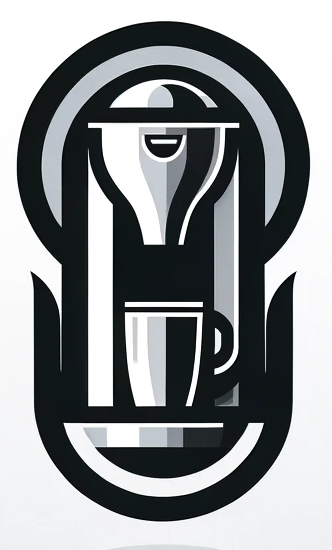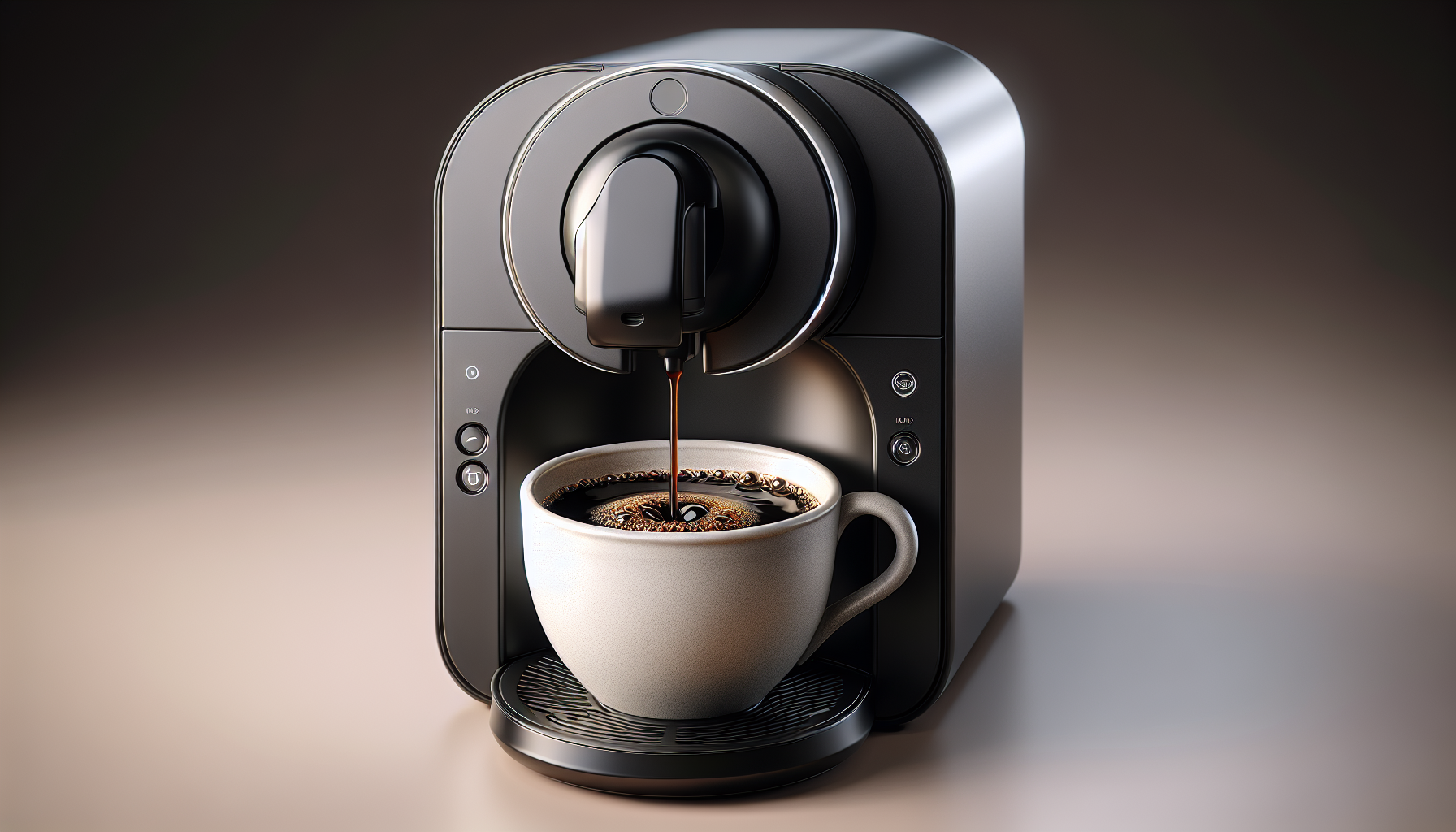Ever wonder if your trusty Keurig coffee maker is secretly draining your electricity bill? Well, wonder no more! In this article, we will explore the energy consumption of a Keurig and uncover whether or not it truly uses a lot of electricity. So, if you’re curious about the impact of your caffeine fix on your monthly expenses, read on to discover the surprising truth behind your beloved Keurig’s power consumption.
CHECK OUT SINGLE SERVE BREWERS ON AMAZON
How does a Keurig work?
Keurig basics
A Keurig is a popular single-serve coffee brewing system that delivers a quick and convenient cup of coffee with the push of a button. The Keurig machine uses K-Cup pods, which contain pre-measured coffee grounds, to deliver a consistent and flavorful brew. Let’s dive into the specifics of how a Keurig works and the different factors that can affect its electricity usage.
The brewing process
When you place a K-Cup pod into the Keurig machine and close the lid, a series of steps are initiated to brew your coffee. First, the machine punctures the foil lid of the K-Cup, enabling hot water to flow into the pod. The water is then heated to the desired brewing temperature, typically between 192-197 degrees Fahrenheit. Once heated, the water is forced under pressure through the coffee grounds, extracting the flavors and aromas. Finally, the brewed coffee flows through a filter and into your cup, ready to be enjoyed.
Power consumption during operation
The power consumption of a Keurig during operation varies depending on factors such as cup size, water volume, and machine settings. While it is normal for the machine to draw a higher amount of power during the initial heating phase, it generally operates at a lower power level during the actual brewing process. However, it’s important to understand that energy usage can vary between different models and generations of Keurig machines.
CHECK OUT SINGLE SERVE BREWERS ON AMAZON
Factors affecting electricity usage
Cup size and water volume
One significant factor that affects the electricity usage of a Keurig is the cup size and water volume you choose. Larger cup sizes require more water to be heated, resulting in increased power consumption. Similarly, if you decide to brew multiple cups in quick succession, the machine will need to heat and reheat the water, using more electricity.
Machine settings
The settings you choose on your Keurig machine can also impact its power consumption. For example, if you select a higher brewing temperature or a stronger brew option, the machine may draw more power during the brewing process. It is essential to consider these settings and adjust them according to your preferences to find a balance between energy usage and your desired coffee strength.
Standby mode
When the Keurig machine is not in use, it often enters a standby or idle mode to conserve energy. However, it’s crucial to note that even in standby mode, the machine still draws a small amount of power. While the energy consumption is significantly lower than during the brewing process, it is advisable to unplug the machine when not in use for an extended period to further reduce standby power consumption.
Frequency of use
The frequency at which you use your Keurig machine can also impact its electricity usage. If you use your Keurig multiple times a day, it will consume more power compared to occasional use. It is worth considering whether your usage justifies keeping the machine plugged in all the time or if you can plug it in when needed to minimize unnecessary energy consumption.
Comparing Keurig to other appliances
Keurig vs. traditional coffee makers
Compared to traditional coffee makers, Keurig machines generally have a quicker brewing process. Traditional coffee makers often require a longer brewing time, which means they consume more electricity to maintain the water temperature. On the other hand, Keurig machines heat only the required water for the specific cup size, resulting in potentially lower energy consumption for single cups of coffee.
Keurig vs. electric kettles
When it comes to heating water, electric kettles are known to be relatively efficient compared to Keurig machines. Electric kettles are designed to heat water quickly and are typically more energy-efficient when solely heating water. However, electric kettles cannot brew coffee or tea as conveniently as a Keurig machine, so the comparison may not be entirely fair if you prioritize the overall functionality of a single-serve coffee maker.
Keurig vs. microwave for heating water
Using a microwave to heat water for your coffee may seem energy-efficient, but it is worth mentioning that microwaving water often leads to uneven heating, resulting in potential safety hazards. Furthermore, microwaving water does not provide the ideal water temperature for brewing coffee. Therefore, while it may save some electricity, the quality and convenience of using a Keurig machine outweigh the potential energy-saving benefits of using a microwave.
Energy-saving tips for Keurig owners
Adjusting cup size and water volume
To reduce electricity usage, consider adjusting the cup size and water volume on your Keurig machine. By selecting smaller cup sizes and measuring the appropriate amount of water for your desired coffee strength, you can lower the amount of power required to heat the water.
Turning off the machine after use
To conserve energy, it is recommended to turn off your Keurig machine after each use. While it may seem convenient to leave it on for quick access, the energy consumed during standby mode can add up over time. By simply turning off the machine and unplugging it when not in use, you can contribute to reducing unnecessary energy consumption.
Regular maintenance and descaling
Regular maintenance, including descaling your Keurig machine, can help optimize its energy efficiency. Mineral buildup in the machine’s internal components can lead to longer heating times and increased electricity usage. Following the manufacturer’s instructions for descaling and cleaning can ensure that your machine operates at its best, minimizing energy waste.
Considering alternative brewing methods
While Keurig machines offer convenience and speed, it is worth considering alternative brewing methods if energy efficiency is a priority. Using a French press, pour-over coffee maker, or other manual brewing techniques can reduce energy consumption significantly. However, keep in mind that these methods may require more effort and time compared to the convenience of a Keurig machine.
The environmental impact of Keurig
Single-use plastic pods
One significant environmental concern associated with Keurig machines is the waste generated from single-use plastic pods. While these pods offer convenience and variety, they contribute to plastic pollution and landfill waste. It is estimated that billions of K-Cup pods are used annually, presenting a significant environmental challenge. However, Keurig has made efforts to address this concern by introducing recyclable and compostable pods, as well as offering a reusable pod option.
Recycling options
Keurig has taken steps to make single-use pods more sustainable by making them recyclable in some areas. Many communities now accept K-Cup pods in designated recycling programs. However, it is essential to check with your local recycling facility to ensure they accept these pods and follow the proper recycling instructions provided by Keurig. Additionally, some third-party companies offer recycling services for K-Cup pods, further reducing environmental impact.
Reusable pod alternatives
To minimize waste, Keurig offers reusable pods that can be filled with your choice of coffee grounds. These pods are compatible with Keurig machines and allow you to brew your coffee while reducing plastic waste. By using a reusable pod, you not only contribute to a more sustainable coffee routine but also have the flexibility to choose your favorite coffee blend.
Improvements in energy efficiency
Keurig 2.0 and later models
Keurig has made strides in improving the energy efficiency of their machines with the introduction of newer models. Keurig 2.0 and later models often incorporate energy-saving features such as automatic shut-off timers, efficient heating elements, and improved insulation. These advancements help lower electricity consumption during operation and standby mode, providing a more environmentally friendly brewing experience.
Third-party energy-saving accessories
In addition to the manufacturer’s efforts, various third-party accessories are available to enhance the energy efficiency of your Keurig machine. From insulation wraps to power-saving timers, these accessories can help conserve energy and reduce electricity usage. However, it’s important to note that using third-party accessories may void your machine’s warranty, so it is advisable to check with the manufacturer before making any modifications.
Cost considerations
Electricity usage and monthly bills
The electricity usage of a Keurig machine is relatively low compared to other household appliances. While the exact energy consumption varies between models, the relatively short brewing time and lower power draw during operation contribute to moderate energy usage. Considering the number of brewing cycles and standby power consumption, the overall impact on your monthly electricity bill is generally minimal.
Long-term savings with reusable pods
Using reusable pods can potentially lead to long-term savings compared to continuously purchasing single-use pods. While the initial investment in a reusable pod may be higher, the cost of buying coffee grounds in bulk is often more affordable than purchasing pre-packaged pods. By reusing the pod and reducing plastic waste, you not only save money but also reduce your environmental footprint.
Consumer opinions and experiences
Varied perspectives on energy usage
Opinions on the energy usage of Keurig machines vary among consumers. Some users consider the convenience and time-saving aspects of Keurig machines to be worth the electricity consumed during operation. Others prioritize energy efficiency and opt for alternative brewing methods to reduce their environmental impact. Ultimately, individual perspectives on energy usage depend on personal priorities and considerations.
Factors influencing individual perceptions
Several factors can influence an individual’s perception of energy usage with Keurig machines. These factors include personal environmental values, concern for plastic waste, budget constraints, and convenience preferences. Understanding these factors helps explain the diverse range of opinions and experiences regarding the electricity consumption of Keurig machines.
Government regulations and energy labels
Energy Star ratings
Energy Star is a government-backed program that certifies and promotes energy-efficient products. While not all Keurig machines are Energy Star certified, certain models meet the program’s energy efficiency requirements. When purchasing a Keurig machine, look for the Energy Star label to ensure you are choosing a more energy-efficient option.
Ecodesign Directive (EU)
In the European Union, the Ecodesign Directive sets energy efficiency requirements for various products, including coffee machines. Keurig machines sold in the EU market must comply with these regulations, ensuring a minimum level of energy efficiency. This directive aims to promote sustainable manufacturing practices and reduce energy consumption across the European market.
Conclusion
Does a Keurig use a lot of electricity? While the exact amount of electricity consumed by a Keurig machine varies based on factors such as cup size, water volume, and machine settings, its overall energy usage is relatively moderate compared to other household appliances. By considering energy-saving tips, recycling options, and reusable pod alternatives, you can further minimize the environmental impact of your Keurig. Ultimately, your perception of energy usage will be influenced by personal values, convenience preferences, and considerations of long-term cost savings. With continued improvements in energy efficiency and sustainability measures, Keurig strives to provide a convenient and environmentally conscious brewing experience for coffee lovers around the world.

